When will SpaceX launch Flight 12 of its Starship V3 system? That’s the big question everyone in the space-community is talking about — because this flight could mark the beginning of a whole new era.
Starship version 3, the next-generation vehicle built for bolder, riskier and far more ambitious missions, is now poised for its debut. There are currently two possible timelines: some say it’ll launch by the end of 2025, others believe it will slip into early 2026. But which one is closer to the truth? And more importantly — why is this flight such a big deal for the future of Starship? Let’s find out.
Why Flight 12 Matters
The End of an Era & The Dawn of a New One
The recent Starship Flight 11 wrapped up nearly two weeks ago. Yet, it’s impossible not to feel something significant every time we look back on it. This wasn’t just another test. It was one of SpaceX’s most impressive milestones to date. Gadgets 360+2Parameter+2
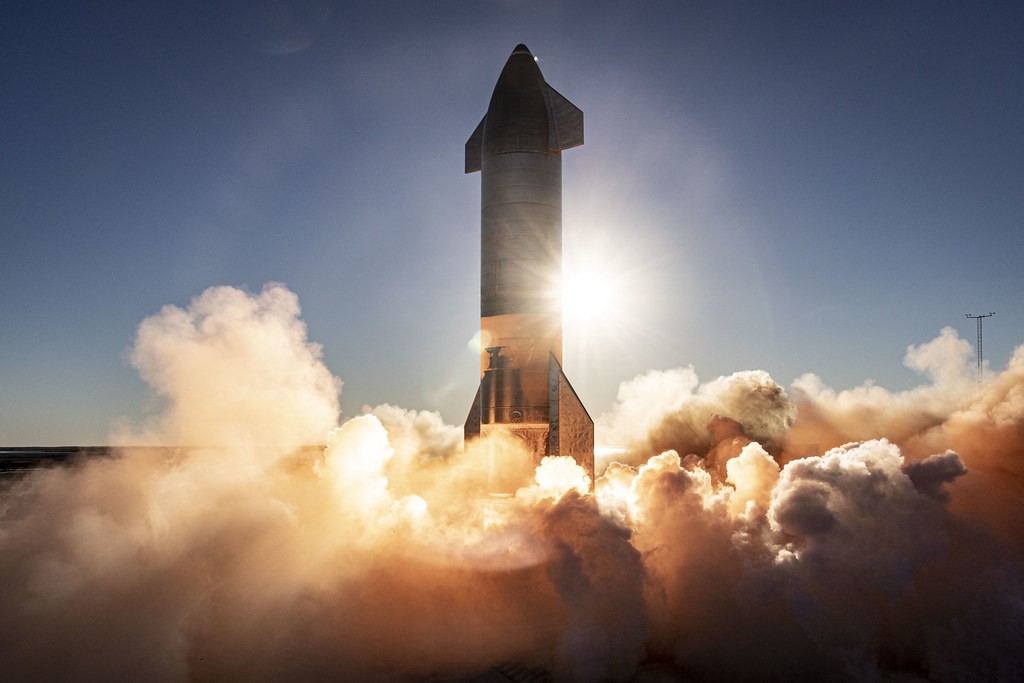
- As the final flight of the year, Flight 11 delivered an incredible show: deploying dummy Starlink satellites, reigniting engines in space, surviving intense re-entry, and landing in the best condition we’ve seen so far. Gadgets 360+1
- Each mission shows how quickly SpaceX learns and improves its vehicles.
- But this mission also comes with a touch of nostalgia: Flight 11 marks the end of Starship Block 2 / version 2, and the last launch from pad A for quite some time. Wikipedia+1
Soon, the “chopsticks” launch mount and tank-farm system will be overhauled. This upgrade will take around six months to a year. During that time, Starship version 3 flights will shift to the new orbital launch pad B. The problem is: no one knows exactly when that first upgraded Starship will take to the skies.
So Flight 12 isn’t just another test. It’s the first big marker for the V3 era — and what comes next.
What We Know About the Hardware
Booster 18 and Ship 39
For Flight 12, the planned hardware includes Booster 18 and Ship 39. Both are progressing fast — but can they really be completed in time for a late-2025 launch?
Booster 18
- The structure is assembled from three main sections: the forward section (already includes the integrated hot-staging ring), the F24 section, and the F34 section. As of August 23, the final F34 segment was rolled out of the Star Factory and moved to the high-bay for stacking.
- The aft section, which houses 33 Raptor-3 engines, will be stacked last after completing cryogenic testing.
- If assembly stays on track, Booster 18 could be moved to the Massie test site by mid-to-late November for cryogenic testing.
- That is plausible, since Massie’s cryo-stand was recently fitted with a quick-disconnect system last month.
- After cryo testing, the booster will receive its full set of Raptor-3 engines and wait for pad B to be ready for its first static-fire test.
Ship 39
- After a long wait, Ship 39’s nose cone has finally moved into Mega Bay 2, where it’s now being joined with the forward dome section.
- The mid-body segments and internal structures are expected to arrive in the coming weeks.
- Based on previous Starship V2 build-timelines, SpaceX typically needs about 6 weeks to assemble a complete vehicle. However — because Ship 39 introduces several new design updates and construction methods — engineers will need extra time: roughly 7 weeks in total.
- If that schedule holds, we could see a fully-stacked Ship 39 by mid-to-late November.
- After stacking, cryogenic testing could begin around that same time. The ship’s cryo-testing stand at Massieite is already equipped with its own quick-disconnect system, supporting a smooth process.
- After cryo tests, Ship 39 will return to Massie for engine installation, followed by a static fire test around mid-December.
So if everything stays on track, a late December launch window for Flight 12 still looks entirely possible.
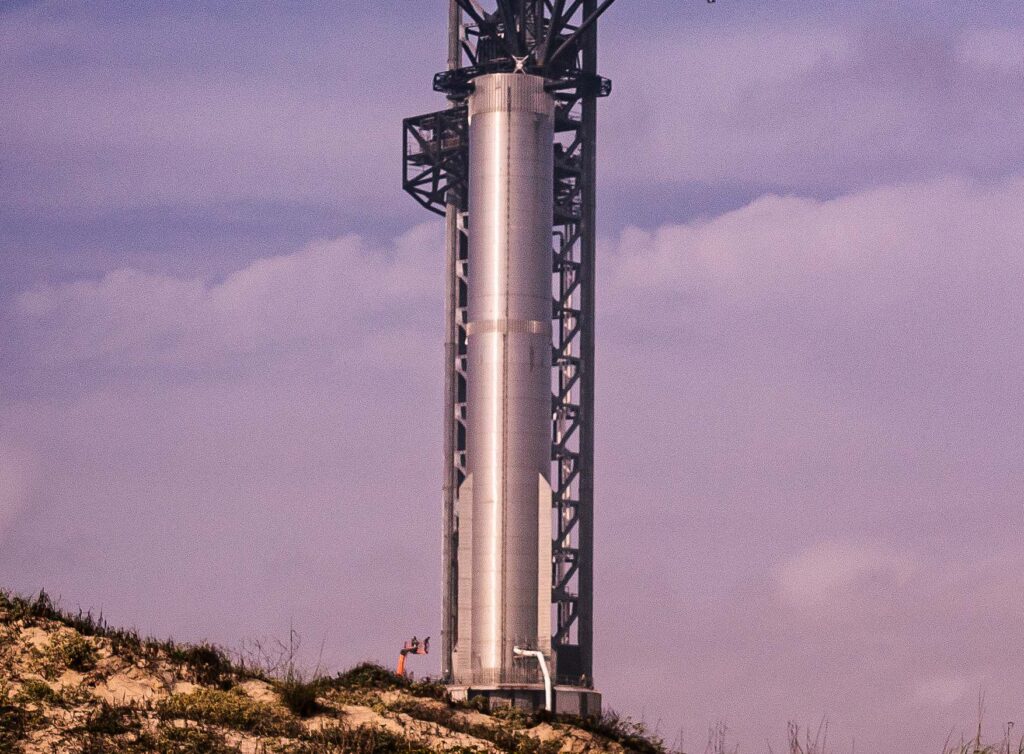
But … There’s a Big “If” — Launch Pad Readiness
One major wildcard remains: is the launch pad ready? Because even if the vehicles are ready — if the pad isn’t fully ready — a launch will not happen.
Pad B (new orbital pad) progress
- Overall construction at the new pad is moving steadily. In recent weeks, SpaceX has made major progress on the service structure attached to the launch mount.
- The southern side of its shell is nearly complete, with only two large panels missing near the base. Both lateral sides are nearly done — each with only one missing piece.
- The upper section (where the launch tower connects to the orbital mount) has also started receiving outer panels, giving the pad a more “flight-ready” look.
- Teams have installed flexible hoses on both quick-disconnects (QDs) which will feed propellants into the booster just before liftoff. These QDs are now linked to their protective doors — an essential step for withstanding the extreme exhaust pressure of the Raptor engines during launch.
- Progress continues on the blast wall that will shield the pad’s deluge-tank system from exhaust energy.
- Higher up on the tower, crews are extending cable trays toward the ship’s QD-arm mount — likely preparing for future installation of the actual arm.
- As for the “chopsticks” — stay-arm/booster-catching system — only minor work has been done lately. Scaffolding is still up, mostly for tower access. Nothing major — but also not done.
- Interestingly, much of the scaffolding inside the flame-trench was recently removed — likely to make space for new heat-shielding and reinforcements along the inner walls.
With so much still in progress, it’s doubtful that pad B will be fully ready within the next month. That’s a problem — because Booster 18 will need to perform its static-fire test there. The recent water-deluge tests showed the cooling system is working fine — but the booster QD, the crucial part that fuels the rocket, might still need more work. Without that, there’s no static-fire, and thus no launch.
Still, progress is moving in the right direction — and there’s a real chance that everything could come together by mid-December.
So What’s the Likely Timeline? 2025 or 2026?
Scenario 1: Late 2025 Launch
- Booster 18 and Ship 39 stay on schedule, finishing assembly, cryo testing, static fires, and roll-out by late October–November.
- Pad B becomes sufficiently ready to accommodate the static-fire and launch operations by early December.
- A launch window opens in late December 2025 for Flight 12.
Scenario 2: Early 2026 Slip
- Any delays — in booster/ship build, cryo testing, engine installation, pad completion, or regulatory clearance — push the timeline into January or February 2026.
- According to tracking lists, Flight 12 is listed in some sources as “NET” (no earlier than) 2026. Wikipedia+1
Which is more plausible?
Given the publicly-available info:
- The hardware is progressing quickly and seems to allow a late-2025 date — in theory.
- The pad readiness adds risk: it’s unlikely to meet full readiness in less than a month from now (October 2025).
- Historically, SpaceX has ambitious schedules but often slips.
- Many observers on Reddit and in the community expect Flight 12 in Q1 2026. > “My guess for the timeline is more like… Q1 2026: Flight 12 (1st Block 3 Starship)” Reddit+1
- Official sources list Flight 12 as “2026 › Block 3 vehicles … NET” in the future-launch list. Wikipedia+1
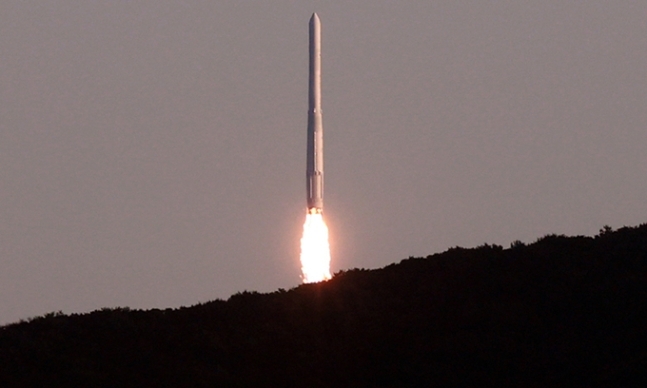
My best used-guess? If I had to pick: January 17, 2026 — exactly one year after Flight 7 (first launch of Starship version 2) — seems like a plausible symbolic date. But keep in mind: this is a guess. SpaceX itself is cautious. Even Elon Musk admitted in a recent post that V3 should be built and tested and may fly by end of this year — if all goes well. If he’s not sure, it’s too early for any of us to be confident either.
What Will Flight 12 Actually Do?
This isn’t going to be an all-out mission with orbit, refuelling, catching and Mars insertion. Far from it. Flight 12 is the first mission of the version 3 design, and that means a conservative profile: test, not risk.
Mission profile highlights
- According to sources, Flight 12 will perform a controlled soft splashdown at sea, following a similar profile to Flights 10 & 11 — but with brand-new V3 hardware across the board. Primal Nebula
- It won’t attempt the bold manoeuvres like tower-catching with “Mechazilla”, or orbital refuelling. That will come later.
- Both Booster 18 and Ship 39 are expected to validate the new hardware: new hot-staging ring, three grid-fins (instead of four), Raptor 3 engines, upgraded heat shield, reinforced catching points, payload bay and refuelling hardware upgrades.
- For example: the new hot-staging method could deliver higher separation efficiency and greater reliability by eliminating the old jettison process entirely. The Raptor 3 engines promise more thrust, improved reliability and easier manufacturing thanks to a simplified design. With only three grid-fins instead of four, the booster’s descent/control will be tested.
- Ship 39 is also receiving upgrades: its heat shield has been improved (materials and installation techniques), the payload-bay and deployment systems are being improved to handle more realistic payloads, and catching points have been reinforced and redesigned for future recovery tests. Plus: new refuelling hardware for in-orbit tests.
- Flight 12 will also validate the Raptor 3 engines on the upper stage. By keeping a flight profile similar to previous flights, the risk is reduced, enabling focus on new hardware performance rather than mission complexity.
Why this matters
- If successful: this flight will enable SpaceX to speed up testing, opening the door for more ambitious goals like in-orbit refuelling or real payload deployments as soon as next year.
- If problematic: any major issue could delay upcoming missions, pushing all timelines back.
- As one tracking list puts it: Flight 12 will “feature the first use of Block 3 vehicles … and be the first launch from Starbase’s second launch pad.” Wikipedia+1
- The outcome will influence how fast Starship can move toward full reusability and operational missions.
Broader Implications: Moon, Mars and Beyond
Beyond the technical side, this mission carries huge implications for SpaceX’s long-term goals: lunar refuelling tests, NASA’s lander programme, and even the first uncrewed Mars missions.
- Most importantly, its progress could directly impact Artemis III (the mission set to return humans to the Moon in 2027). SpaceX’s Starship is a key part of NASA’s lunar ambitions.
- The hardware being tested now (Raptor 3, grid-fin redesign, refuelling capability) is intended for Mars missions, advanced satellite launches and deep-space applications.
- For instance: Elon Musk has previously indicated that springtime could be when SpaceX tries its first “catch” of a Starship upper stage with “Mechazilla” arms. And during the Flight 10 livestream, he revealed that a crucial technology next year is orbital refuelling — akin to aerial refuelling, essential for sending significant payloads to Mars.
- Clearly, what’s coming next will be far more exciting and daring than anything we’ve seen from version 2. But the catch is: Flight 12 is not that daring yet. It’s the stepping‐stone.
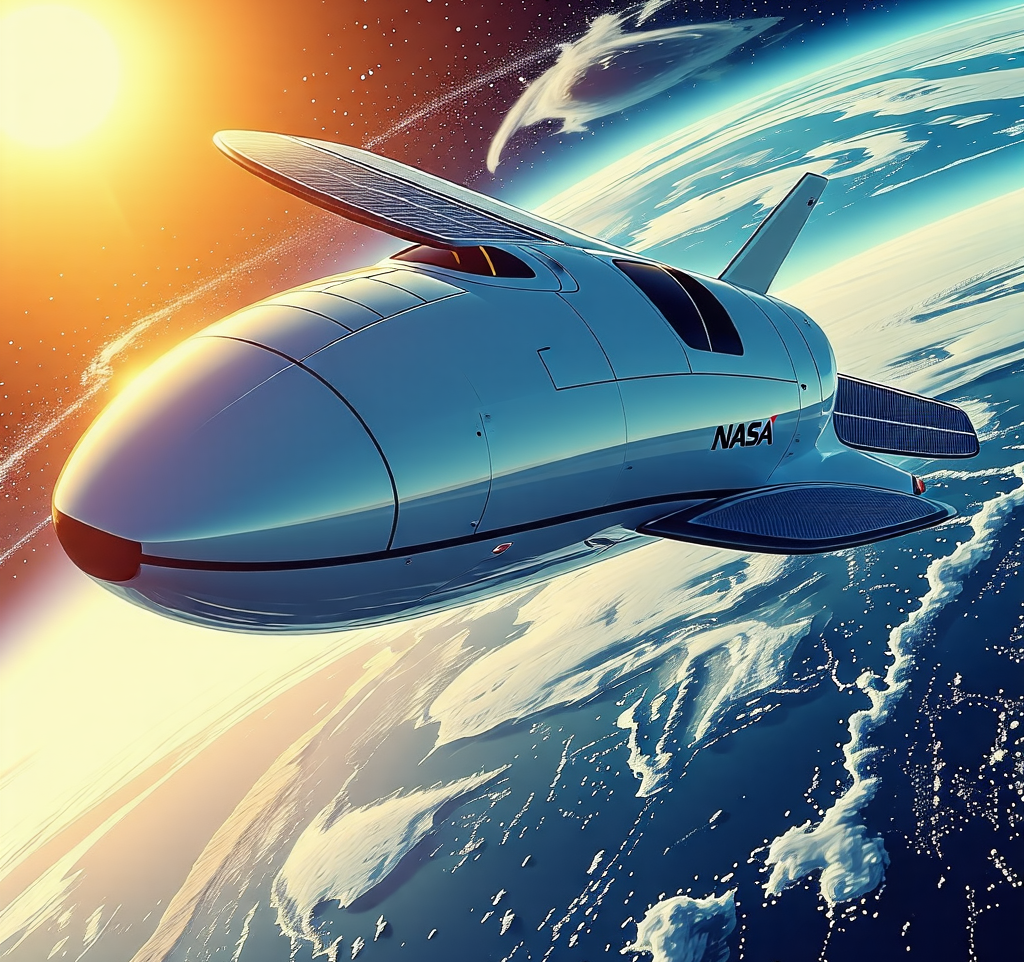
Summary & What to Watch
Here are the key take-aways:
- Flight 12 of Starship V3 is highly important — the next era of SpaceX’s reusable-system ambitions begins here.
- The hardware (Booster 18, Ship 39) is on track for a late-2025 date — but pad readiness (Pad B) is a major potential delay factor.
- A late-2025 launch is technically possible, but realistically we may be looking at Q1 2026.
- The mission won’t yet attempt the bold stuff (orbital, catching, in-orbit refuelling) — that’s for later (Flight 13, 14 …).
- Its success or failure matters a lot: it will influence how quickly SpaceX can proceed to lunar / Mars-capable missions.
- We’ll be watching progress on: pad readiness updates, static-fire success of Booster 18 and Ship 39, regulatory/air-space notifications, and official launch-window announcements.
Final Thoughts
So — will Flight 12 launch in 2025 or slip into 2026? My bet is early 2026. Why? Because the pad readiness appears to be the bottleneck, and historically SpaceX has taken a bit of slack on the tail‐end of ambitious dates. But if everything goes perfectly — hardware, pad, regulatory, weather — then yes: a December 2025 window is possible.
Whichever way it goes, one thing’s clear: when Flight 12 does launch, it will mark a major milestone for SpaceX. Because this isn’t just another rocket test — it represents the dawn of a new Starship era, powered by upgraded engines (Raptor 3), a stronger booster, a completely redesigned launch pad, and hardware built for the long haul (the Moon, Mars, beyond).
And to you: What do you think? Will SpaceX make it before the end of the year — or will Flight 12 slide into early 2026? Let me know your thoughts in the comments.
FAQs
1. What is SpaceX’s Starship Flight 12?
Starship Flight 12 is the next major test mission of SpaceX’s fully reusable rocket system. It marks the first launch of the new Starship Version 3 (V3), featuring upgraded engines, structures, and systems for future lunar and Mars missions.
2. When will SpaceX’s Starship Flight 12 actually launch?
The most optimistic estimate points to a late December 2025 launch, while a more realistic target is early 2026, possibly around January 2026, depending on pad readiness and regulatory approvals.
3. Why is Flight 12 such a big deal for SpaceX?
Flight 12 marks the beginning of the Starship V3 era, introducing Raptor 3 engines, a stronger Super Heavy booster, and a redesigned launch pad. It’s a critical step toward achieving full reusability and interplanetary capability.
4. Which Starship and booster will be used for Flight 12?
The flight will feature Booster 18 (Super Heavy) and Ship 39 (Starship upper stage). Both are newly built with Version 3 upgrades that improve performance and reliability.
5. What are the main upgrades in Starship V3?
Starship V3 includes:
- New Raptor 3 engines for higher thrust and efficiency
- A hot-staging ring for smoother stage separation
- Lighter, stronger materials
- Improved heat shield tiles
- New refueling hardware for orbital propellant transfer
6. Will Flight 12 attempt to reach orbit?
No. Flight 12 will follow a sub-orbital trajectory and perform a controlled splashdown at sea. The goal is to validate the new V3 hardware before attempting orbital and recovery missions.
7. Will SpaceX try to catch Starship during Flight 12?
No. The “Mechazilla” tower catch isn’t planned until later flights (around Flight 13–15). Flight 12 will focus on data gathering and system validation, not recovery.
8. What’s new about the Raptor 3 engine?
The Raptor 3 offers higher thrust, simpler design, fewer parts, and greater reliability than Raptor 2. It also enables easier production scaling for large fleets of Starships.
9. How will the new launch pad (Pad B) differ from the old one?
Pad B features:
- A redesigned flame trench and deluge system
- Improved fueling lines and quick-disconnect arms
- Stronger blast walls and tower reinforcements
It’s built specifically for Starship V3’s size and power.
10. Why might the launch be delayed to 2026?
Delays could come from pad construction, engine integration, cryogenic testing, or FAA licensing. SpaceX often targets ambitious dates, but real-world readiness usually shifts launches by a few months.
11. What was special about Starship Flight 11?
Flight 11 successfully demonstrated engine relight in space, dummy Starlink satellite deployment, and the best re-entry survival so far. It was the final flight of Starship Version 2, paving the way for V3.
12. How will Flight 12 impact future Starship missions?
Its success will determine how fast SpaceX can advance to catch attempts, orbital refueling, and payload missions. A smooth Flight 12 could accelerate the timeline toward operational lunar and Mars flights.
13. What’s the role of Flight 12 in NASA’s Artemis program?
Flight 12 helps validate key systems that NASA needs for its Artemis III lunar landing mission in 2027, such as orbital refueling and precision landing technologies.
14. When will SpaceX test orbital refueling?
SpaceX is expected to demonstrate orbital refueling in 2026, after a few successful Starship V3 flights. This technology is crucial for sending heavy payloads to the Moon and Mars.
15. What are the biggest risks for Flight 12?
Potential risks include:
- Pad B not being ready
- Engine ignition or hot-staging issues
- Heat-shield tile loss
- Cryogenic fuel leaks or plumbing failures
16. Will Flight 12 carry any payloads?
Flight 12 will likely carry test payloads or dummy satellites only. Its main purpose is to collect data on the new design, not deliver commercial cargo.
17. When will SpaceX attempt the first Starship catch?
Elon Musk has hinted that the first Mechazilla catch could happen around Flight 13–15, depending on how well Flight 12 performs. The earliest possible attempt may be spring 2026.
18. How does Starship V3 bring SpaceX closer to Mars?
Starship V3’s reusability, refueling capability, and increased thrust are essential for deep-space missions. It’s the version that could finally make sustainable Mars transport possible within the next decade.
Read More:
- Tesla makes a massive change to a Service policy that owners will love
- Elon Musk’s 2026 NEW Tesla Pi Phone is BREAKING the Market: What You Get for $257?
- Where to Buy Tesla Wheelchair in 2026: Your Ultimate Guide
- SpaceX Ramps Up Pad 1 Demolition after Starship V2 End! Ready to Catch Ship Early 2026
- Tesla Full Self-Driving’s biggest improvements from v13 to v14

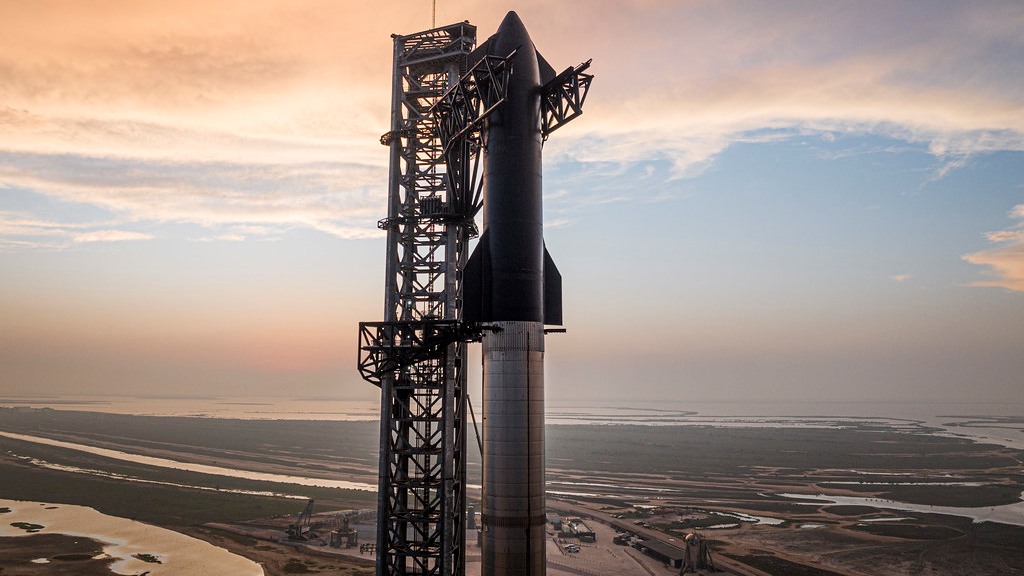
1 thought on “SpaceX revealed New Starship V3 Launch Date, Sooner than NASA thinks”